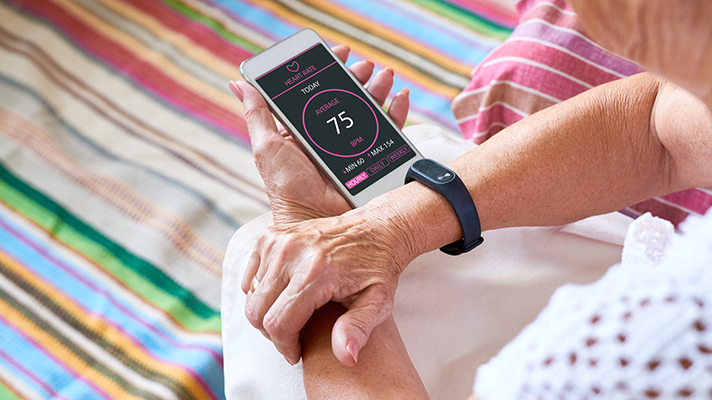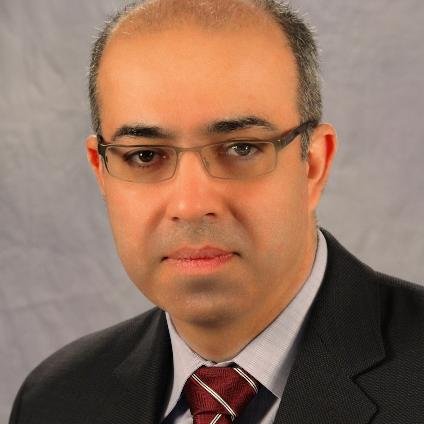Blockchain beyond EHRs: Transforming value-based payment, precision medicine, patient-centric care

The considerable hype around blockchain is starting to be tempered by enterprises earning practical experience and identifying worthwhile use cases for the technology.
Most of the buzz around blockchain in healthcare has focused on EHRs, interoperability and security, but a new potential for value-based care, precision medicine and a patient-driven healthcare system are emerging as more clear and present opportunities for the distributed digital ledger technology.
While we don’t expect the hope for data interoperability and security to fade away, hospital executives who want to stay abreast of what’s really happening with blockchain will also need to understand these new considerations.

Blockchain and the move to value-based care
A variety of possible use-cases for blockchain are coming into focus for healthcare, ranging from clinical to financial to administrative.
“Traditional healthcare fee-for-service payment systems are overly complex and expensive from an administrative perspective. On average, payment administration accounts for about 14 percent of healthcare spending. Blockchain applications can definitely reduce the waste,” said Corey Todaro, chief product officer at Hashed Health, which leads a consortium of healthcare companies focused on accelerating innovation using blockchain.
Beyond fee-for-service, blockchain as a technical architecture can enable value-based payments to take off and thrive, some experts said.
“Blockchain can enable a smart payment system to match the distributed care teams that will take responsibility for episode- and disease-centered payment models,” Todaro added.
Claims adjudication and billing management is ripe for a blockchain-based system that can provide realistic solutions for minimizing medical billing-related fraud; this is a highly relevant use-case given the amount of fraudulent activities around improper medical billing and reimbursements across the payer industry, said Tapan Mehta, market development executive in the healthcare practice at DMI, a mobile technology and services company.
“For example, in a situation where a health plan and patient are dealing with a contract, the blockchain could automatically verify and authorize information, as well as the contractual processes, eliminating the back-and-forth between multiple parties,” Mehta said. “This would increase transparency and efficiency, leading to lower administration costs, faster claims processing and less money lost.”

Precision medicine and a patient-driven healthcare system
Blockchain-based systems could help drive unprecedented collaboration between participants and researchers around innovation within medical research, particularly in the fields of precision or personalized medicine.
Maria Palombini, director of emerging communities and initiatives development at the IEEE Standards Association, said that blockchain can enable the patient-driven healthcare system.
“The lack of interoperability among data systems in a personal health network is a detriment on patient care,” she said. “Informed patients know that data is critical to enhancing their care and safety. This is beyond safety from data hacks, this is the ability for their healthcare providers to have access to information that will help them better treat the patient.”
There has been a trend in educating patients to manage their health to embrace wellness and prevention, and that may also include the data that is generated out of this practice, she added.
The best type of patient is an informed patient. If blockchain can deliver a patient-managed EHR system, the business of healthcare will be about delivering service and treatment to better health and not owning the patient’s health, Palombini said.
Precision medicine in clinical trials presents another big opportunity for blockchain innovation, Mehta said.
“According to IgeaHub, it is estimated that about 40 percent of clinical trials go unreported,” he said. “In fact, a majority of pharmaceutical research related to clinical trials is completed in silos, thereby making collaboration across an organization’s internal team impossible. This creates crucial safety issues for patients and knowledge gaps for healthcare stakeholders and policymakers.”

The contribution of wearables
Wearables and internet of things devices can also be integrated into the health IT ecosystem via blockchain.
“Health wearables are currently hoarding critical information for clinical research, outcomes of treatments, and disease prevention and management,” Palombini said. “However, in its current state, the information often sits in a repository where raw data may be inaccessible and never has the ability to be shared for other uses.”
If validated, this health data could be secured, shared and verified on a blockchain and the function of the health wearable takes on a whole new role, with, for example, clinical trial patient recruitment, clinical research and treatment of disease.
Indeed, patient-mediated health data exchange holds a big opportunity for blockchain innovation in healthcare. Blockchain can empower patients and data owners to control access to their healthcare data by using the blockchain as a system of record for patient consent and health data transfer activity.
“Today, patients have little access to their health data and cannot easily share with researchers or providers,” said Shahram Ebadollahi, chief science officer at IBM Watson Health. “Giving patients the opportunity to share their data securely, for research purposes or across their healthcare providers, creates opportunities for major advancements in healthcare. Blockchain technology is designed to make this a reality.”
As more and more patients gain that kind of control over their own data it will flow more efficiently across the system to create something a lot closer to a longitudinal view than what exists now and that, in turn, can enable more accurate data, better access to new treatment options and ultimately improved outcomes, Ebadollahi said.
Yes, this is where electronic health records come back into the blockchain picture.

Blockchain and EHRs
One big question is how might blockchain affect the evolution of the electronic health record? Blockchain can enhance EHRs in many ways, presuming healthcare CIOs and other executives want to move in that direction.
“Blockchain will help connect electronic health records across providers, to enable the full view of a patient’s health data, if patients provide the consent to do so,” Ebadollahi said. “This would be through a patient-mediated health data exchange.”
Currently, EHRs focus on clinical data. The fastest growing type of information is exogenous data, from mobile devices and medical devices and including genomics, Ebadollahi added, and blockchain can help connect these disparate sources to the more traditional clinical data.
The electronic health record, in fact, is generated from many different sources – hospitals, doctors offices, labs and more – each acting as the owner of the data. The fragmented network tying things together can be viewed as more about maintaining the business of patient care.
“If we look at the truly disruptive and emerging trend in blockchain and healthcare, the EHR will be created, maintained and distributed by the patient,” said IEEE’s Palombini. “Therefore, no longer multiple health records owned and operated by Healthcare Inc. Instead, it will be one record with multiple compartments containing data that was extracted as a service by one of these entities and given back to the person to add to their health record.”
These entities will no longer own a patient’s health record; they will merely contribute to the data in it as a rendered service, she added. Blockchain could flip the ownership and maintenance of the EHR completely upside down. It could empower patients to choose with whom, how much, and when they want to share their information, and not be beholden to any health system, she said.
Dave Watson Chief Operating Officer of SSI Group said that EHRs and blockchain working together have a long way to go.
“First, EHR vendors have so many pressing enhancements to deliver, and second, without clear and compelling use-cases, why would EHR vendors move blockchain up in the development queue?” Watson pressed. “They may entertain some proofs of concept or simply make positioning statements so they don’t appear to not be on the bandwagon, but that’s not a viable deployment of the technology.”

Blockchain and security
Another area in healthcare where blockchain could have a profound impact, like with EHRs, is cybersecurity. Blockchain can fundamentally change the way healthcare CISOs and infosec teams think about securing data.
“Blockchain offers a new combat strategy because it is not simply a security system, it is a technology that compels every enterprise professional to rethink their business operations in a digital universe,” Palombini said. “Blockchain is not a patch. It’s a whole new approach to distributing, managing and verifying information in a tamper-proof, decentralized system.”
All transactions are time-stamped and replicated in every block visible to permissioned users but can never be altered, only appended. The decentralized nature of the blockchain provides the ability to distribute anonymized, encrypted data that can be verified by credentialed users.
“This can provide traceability for all health data access, with transparency to auditors,” said IBM’s Ebadollahi. “Blockchain can provide integrity of data by maintaining indelible hashes of the data, so that any alterations of the data are detected.”
The distributed digital ledger technology can also can maintain keys for access to data, adding another level of security by working in concert with other systems to produce immutable audit logs, thereby making illegitimate access more difficult, Hashed Health’s Todaro said.
The largest opportunity is rethinking the movement of data in the healthcare ecosystem. Todaro explained that blockchain enables the development of light-data transactional models in which partners can get expanded utility without having to do large-scale data transfers or availability, both of which are sources of cybersecurity risk.
"One might argue that it may not be blockchain the technology that is oversold, but the amount of work to fix existing taxonomies, protocols and policies to fully maximize blockchain may be undersold."
Maria Palombini, IEEE Standards Association
Hype outpacing reality?
In the end, one might wonder whether blockchain is all it’s cracked up to be. Evangelists sure make blockchain sound like a panacea for all of healthcare’s woes. But is it? Or is there more hype than promise?
Today, the challenge in truly driving innovation in the healthcare system is the inability to obtain and share clean patient health data while maintaining data privacy. The current crop of data management systems are not designed to evenly negotiate the ability to share data while retaining privacy, so the default has been to safe-harbor the data and let data-sharing fall to the wayside.
“The lack of data-sharing has become a true impediment to advancing innovation in drug development and healthcare,” Palombini said. “The true value healthcare providers offer is not the service or product but the data they provide. The data is the key to innovation in finding treatments, disease prevention and more.”
The very nature of blockchain – to distribute information with anonymity in an encrypted and tamper-proof environment – provides the platform to overcome this critical barrier of data-sharing and privacy, Palombini said.
As history has shown time and again, however, technology for technology’s sake cannot fix all problems.
“One might argue that it may not be blockchain the technology that is oversold, but the amount of work to fix existing taxonomies, protocols and policies to fully maximize blockchain may be undersold,” Palombini said.
"It’s important to remember we are just at the beginning of blockchain’s potential in health, so it will take some time before its benefits are fully realized."
Shahram Ebadollahi, IBM Watson Health
An evolutionary journey
Palombini said that there are already more than 100 blockchains in existence across multiple vertical industry sectors.
“It’s important to remember we are just at the beginning of blockchain’s potential in health, so it will take some time before its benefits are fully realized,” IBM’s Ebadollahi said. “But it’s potential should not be underestimated.”
In the next five to 10 years, patient consent and data exchange backed by blockchain could fundamentally change the way healthcare services are provided by making patient longitudinal data readily available and opening the door to new treatments, new care delivery models and better coordination of care, IBM’s Ebadollahi explained. He pointed to blockchain underlying precision medicine and wellness programs outside the health systems as potentially having a large impact on outcomes.
And the matters of blockchain’s inherent limitations with respect to scalability, confidentiality and governance still need to be ironed out, SSI Group’s Watson said.
Working through those thorny issues will be an evolutionary journey for blockchain-based healthcare applications. Trust and governance are key as the interval between proof-of-concept production-quality technologies gets shorter. And building blockchain networks will require a lot of heavy lifting by software vendors and hospitals alike.
Healthcare IT year in review
This was one of our most popular stories of the year.
Twitter: @SiwickiHealthIT
Email the writer: bill.siwicki@himssmedia.com



























